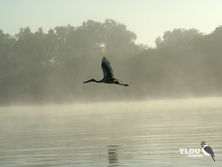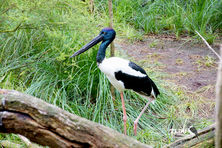
Shoppers Feedback:
Jan 17, 2017
Hello Ros,
I have now paid the invoice, but I would like to write to you just to say a big THANK YOU for getting me the Penguin!
The ChatterMate Penguin became a nice memory for me when I was in New Zealand, and I am so greatful to you for arranging so that I could have it! :-)
Thank you so much!!!!!!!!!!!
Regards,
Malin
Hi Ros,
Many thanks for your very kind email. I really appreciate your prompt reply!
I appreciate your advice regarding the decorations and customs. These are a gift for my daughter’s exchange student family so when she returns home on the weekend I will show her and see if she loves them as much as I do!
Thanks so very much again - I am truly grateful for your kind assistance.
Kind Regards
Bernadette
Ros,
Thanks again for the great customer service. It's a refreshing change!
Best regards,
Trevor
Hey Roz,
Thank you for your emails. Just loved my first order. The cute little Aussie bush critters are going to be used for an office Christmas decoration. My colleagues also liked them and talked about making an order to your site. I'll send you a photo when completed.
I'll be ordering more to send to my daughter's host family in America.
Fabulous service from you.
Kind regards,
Michelle
Thankyou. Order arrived today. One very happy grandson with his new beastly binoculars.
Regards,
Irene
- Home
- Wild Wonders
- Shop
- Aromas of Australia
- Australian Made
- Books
- Book Marks
- Christmas Decoration Sale
- Christmas Decorations
- Clocks
- Drink Holders
- Garden & Outdoor
- Gift Wrapping & Cards
- Home & Giftware
- Jewellery
- Keyrings
- New Products
- Pencils & Pen Holders
- Photo Frames
- Plush Toys
- Plush with Sound
- Sheepskin Rugs
- Stationery
- Stone Carvings
- Toys & Games
- Travel Goods
- Wedding
- Wild Figurines
- Wildlife Safety Products
- Wind Chimes
- Wine Charms
- View All Products
- Wildlife
- Australiana
- Explore
- Contact Us

Quick Facts
| Length: | - |
| Height: | 133 cm |
| Weight: | - |
| Colour: | Black and white body plummage, glossy dark green and purple neck, large black bill, long coral-red l |
| Habitat: | Wetlands, floodplains of rivers with large shallow swamps, flooded paddocks, woodland areas |
| Food: | Fish, small crustaceans and amphibians |
| Predators: | - |
| Status: | Secure in NT, QLD and WA. Endangered in NSW. Not Present in VIC & TAS |
The Black-necked Stork is the only stork found in Australia. With black and white body plumage, glossy dark green and purple neck and massive black bill, it is easily identified from all other Australian birds. The legs are long and coral-red in colour. The female is distinguished by its yellow eye. Immature birds resemble adults, but the black plumage is replaced by brown and the white plumage is duskier. This species is also known as the Jabiru.
The Black-necked Stork is restricted mainly to coastal and near-coastal areas of northern and eastern Australia. Throughout the monsoonal areas of northern Australia, the Black-necked Stork is still widespread, but fewer numbers appear southwards to eastern Australia.
The Black-necked Stork inhabits wetlands, such as floodplains of rivers with large shallow swamps and pools, and deeper permanent bodies of water. Occasionally individuals will stray into open grass, woodland areas or flooded paddocks in search of food.
Outside the breeding season, small family groups may be seen. These groups may be partially nomadic or may stay in the same area.
The Black-necked Stork feeds on fish, small crustaceans and amphibians. Most prey is caught by the bird jabbing and seizing it with its large bill. Some food is caught by lunging forward with a large stride or by leaping into the air.
Pairs of Black-necked Storks bond for several years, perhaps for life. The nest is a large platform of sticks and other vegetation, which is placed in a tall tree standing in or near water. Birds are secretive and nest in isolated pairs. There is little courtship, with the exception of some bowing and clapping of bills. The eggs are white and conical and are incubated by both parents. Both parents care for the young.
In the past the species was found in much of eastern New South Wales, but is now extinct throughout much of this area. The range of the Black-necked Stork has been reduced with the modification of floodplains and tall reed beds for agriculture, mining and human settlement.
Last Updated: Wednesday 17th July, 2013
BUSH e-TELEGRAPH
Signup for our monthly newsletter the "e-Telegraph"
Quick Links
Home | The Beginning | About The Land Down Under | Wild Wonders | Advertise on Wild Wonders | Christmas Decoration Sale | Christmas Tree Decorations | Drink Holders | Plush with Sound | Stone Carvings | Wildlife Wine Charms | Freebies | Australian Wildlife | Help Our Wildlife | Australiana | Photo of the Month | Explore The Land Down Under | Contact Us | Legal Notices


